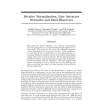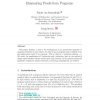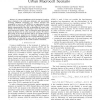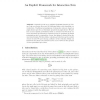26 search results - page 3 / 6 » Strong normalization property for second order linear logic |
NIPS
1998
13 years 8 months ago
1998
Gain control by divisive inhibition, a.k.a. divisive normalization, has been proposed to be a general mechanism throughout the visual cortex. We explore in this study the statisti...
ENTCS
2002
13 years 7 months ago
2002
This paper presents a step in the development of an operational approach to program extraction in type theory. In order to get a program from a lambda term, the logical parts need...
CORR
2006
Springer
13 years 7 months ago
2006
Springer
Abstract. In the first part of this paper we present a theory of proof nets for full multiplicative linear logic, including the two units. It naturally extends the well-known theor...
VTC
2010
IEEE
13 years 5 months ago
2010
IEEE
—A common simplification in the treatment of random linear channels is the wide-sense stationary and uncorrelated scattering (WSSUS) assumption. For wireless channels, this assu...
RTA
2009
Springer
14 years 2 months ago
2009
Springer
Abstract. Interaction nets are a graphical formalism inspired by Linear Logic proof-nets often used for studying higher order rewriting e.g. β-reduction. Traditional presentations...




